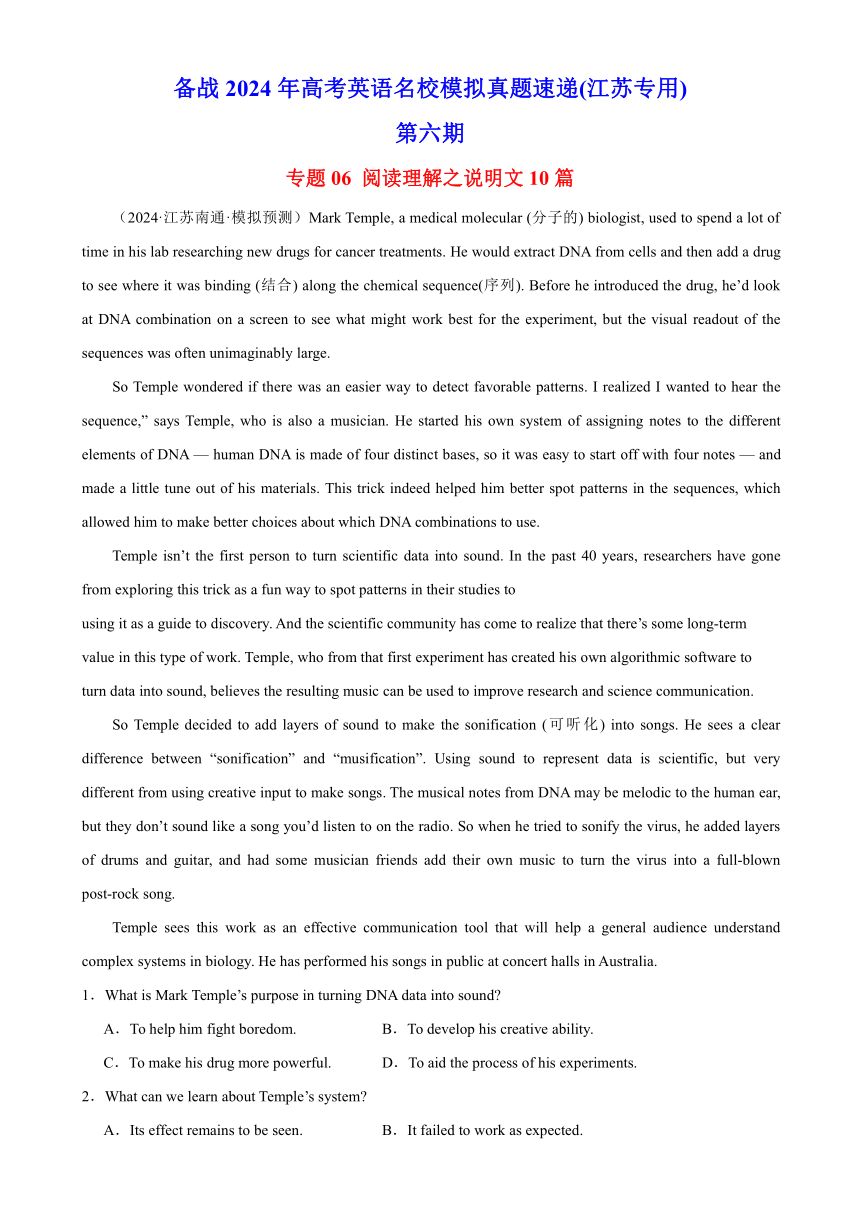
备战2024年高考英语名校模拟真题速递(江苏专用) 第六期 专题06 阅读理解之说明文10篇 (2024·江苏南通·模拟预测)Mark Temple, a medical molecular (分子的) biologist, used to spend a lot of time in his lab researching new drugs for cancer treatments. He would extract DNA from cells and then add a drug to see where it was binding (结合) along the chemical sequence(序列). Before he introduced the drug, he’d look at DNA combination on a screen to see what might work best for the experiment, but the visual readout of the sequences was often unimaginably large. So Temple wondered if there was an easier way to detect favorable patterns. I realized I wanted to hear the sequence,” says Temple, who is also a musician. He started his own system of assigning notes to the different elements of DNA — human DNA is made of four distinct bases, so it was easy to start off with four notes — and made a little tune out of his materials. This trick indeed helped him better spot patterns in the sequences, which allowed him to make better choices about which DNA combinations to use. Temple isn’t the first person to turn scientific data into sound. In the past 40 years, researchers have gone from exploring this trick as a fun way to spot patterns in their studies to using it as a guide to discovery. And the scientific community has come to realize that there’s some long-term value in this type of work. Temple, who from that first experiment has created his own algorithmic software to turn data into sound, believes the resulting music can be used to improve research and science communication. So Temple decided to add layers of sound to make the sonification (可听化) into songs. He sees a clear difference between “sonification” and “musification”. Using sound to represent data is scientific, but very different from using creative input to make songs. The musical notes from DNA may be melodic to the human ear, but they don’t sound like a song you’d listen to on the radio. So when he tried to sonify the virus, he added layers of drums and guitar, and had some musician friends add their own music to turn the virus into a full-blown post-rock song. Temple sees this work as an effective communication tool that will help a general audience understand complex systems in biology. He has performed his songs in public at concert halls in Australia. 1.What is Mark Temple’s purpose in turning DNA data into sound A.To help him fight boredom. B.To develop his creative ability. C.To make his drug more powerful. D.To aid the process of his experiments. 2.What can we learn about Temple’s system A.Its effect remains to be seen. B.It failed to work as expected. C.It is too complicated to operate. D.It has produced satisfying results. 3.Why did Temple try to make the virus sound like real music when sonifying it A.To get rid of public fear of the virus. B.To show h1s talent in producing music. C.To facilitate people’s understanding of science. D.To remind people or t ... ...
~~ 您好,已阅读到文档的结尾了 ~~

